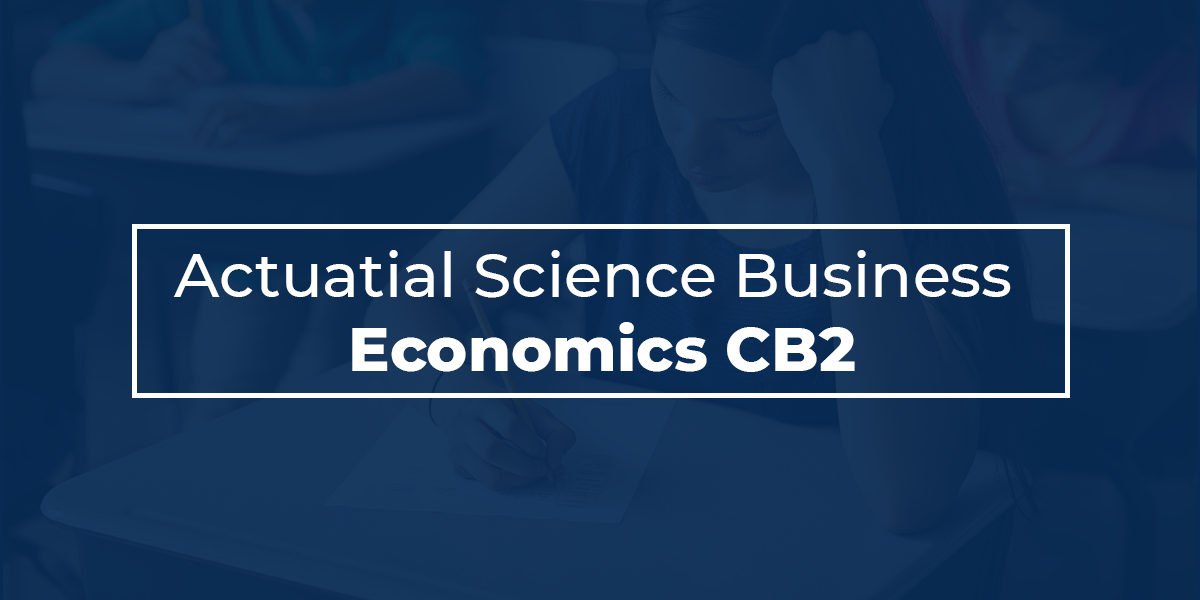Actuarial Science Business Economics(CB2): The Definitive Guide

Under the new curriculum of IFoA and IAI (after 2019), the older subject CT7 (Business Economics) has been moved to Actuarial Science Business Economics(CB2) . You can get a sense of how the world of economics operates by taking this exam. It teaches us how economic theories can be used by firms to help them make decisions. The foundations of macroeconomics and microeconomics are examined in this test.
Actuarial Science Business Economics(CB2) is a three-hour and fifteen-minute assessment divided into three sections as follows:
- Economic theories and their use in the past (10% of the total)
- The study of consumer, firm, and market behavior is known as microeconomics (45% weighting).
- Macroeconomics (45% of the weight) is the study of how governments, markets, enterprises, government policies, and international trade interact.
What is the structure of the Actuarial Science CB2 exam?
There are 26–30 multiple-choice questions at 1.5 marks each on the exam, as well as 6–10 questions with long and medium answers worth 5–12 points each.
What is the time required to prepare for Actuarial Science CB2 exam?
The IFoA advises spending 150 hours studying for this test.
Is it necessary to take coaching for Actuarial Science CB2 exam?
It is not necessary to take test preparation classes because this is one of the Actuarial curriculum’s simpler exams. This exam will be fairly simple to prepare for people who have studied economics in high school or as part of their university’s program. By reading the Core Reading offered by IFoA, folks who have never studied economics before will be able to comprehend it fully because it thoroughly and simply explains each subject and provides examples for each one.
Is Actuarial Science Business Economics is a theory paper?
CB2 is indeed an application-based theory paper that includes MCQs and graphs.
CB2
₹10,000.00 – ₹13,000.00What are the differences between CT7 and CB2, IFoA syllabus?
The macroeconomic history, the function of financial markets, market players, economic thinking strands, indifference curves, and budget lines are some of the new topics added to the CB2 syllabus. There are changes to chapter 17 and deletions of chapters 4, 10, and part of chapter 9. We urge you to read the specific pages of the John Sloman Economics Book that are recommended to be read in the Core Reading material in addition to the new CB2 curriculum Core reading.
What topics do we study under CB2?
The topics covered under the CB2 curriculum are:
- Fundamental ideas in economics, such as scarcity and commercial decisions.
- The contrast between micro and macroeconomics.
- The branches of economic thought are found in different economist models.
- The macroeconomics of recent times.
- The ideas of market supply and demand.
- The ideas of equilibrium.
- The demand and supply elasticity of price and income.
- The roles of costs, revenue, and production in businesses.
- Consumption Patterns
- How advertising affects enterprises.
- Monopolistic, oligopolistic, and other sorts of marketplaces.
- Different pricing tactics;
- Globalization.
- Commerce abroad.
- Payments Balance
- Exchange rates.
- The part money and interest play in the economy.
- Different methods for reducing inflation.
- The Impact of Joblessness on Economies
What are the passing marks of CB2?
At the time of result declaration, the IFoA declares each subject’s pass marks. For CB2, the score for the 100-point exam is still rather close to 60.
Any tips and tricks for the CB2 exam (for both IAI and IFoA)?
- Self-study the Core readings with intense concentration.
- Practise graphs, elasticity-related numbers, and cost calculations.
- Use time management techniques.
- MCQs are somewhat baffling. Practise them as much as you can using last year’s exams.
- Practise at least five past-year papers well before the exam. You will get a sense of how to compose concise answers to queries from this.
Conclusion:
Business Economics, a former subject in CT7, has been relocated to CB2 in the new IFoA and IAI curriculum (starting in 2019). By taking this test, you can acquire an idea of how the economic world functions. It tells us how businesses might utilize economic theory to guide their decision-making. This test looks at the principles of both macroeconomics and microeconomics.



